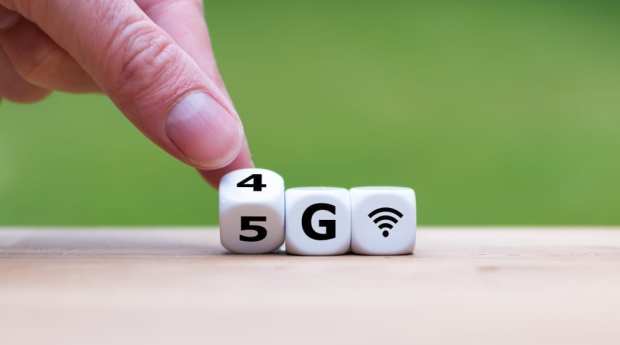Facial Recognition Biometrics Finds A Friend In 5G

As 5G deployments start, retailers and other companies and organizations around the world are striving to find what works. One of the latest such projects combines the new mobile network technology with facial recognition and vending machines — a possible glimpse of the 5G future.
The effort reportedly involves China-based UTStarcom and China Mobile Group, and a “refrigerated vending machine” called goBox.
According to the report, the “goBox will make a facial recognition scan to identify the customer before they open the door of the refrigerator. After that, sensors and cameras will make note of the items the customer removes from the machine, at which point the user will be charged for their purchases.” The 5G-enabled facial recognition process reportedly will take “less than a second, while the tech itself can be deployed in virtually any retail environment. According to UTStarcom and China Mobile Group, facial recognition will create a seamless shopping experience that eliminates the need to carry a physical object like a credit card or a mobile phone.”
5G Speed
The goBox is not the first vending machine to rely on biometrics, but the technology shows how retailers are looking to the increased speed of 5G to bolster their own commerce offerings.
The deployment of this 5G-enabled vending machine is the latest retail 5G push that is helping to show the path forward for commerce and payments that uses the emerging mobile payments technology. Much of that innovation is coming from Asia in these early days for 5G, where South Korea and China are, judging by virtually all reports on the matter, far ahead of other markets when it comes to 5G deployments. (A recent report also says the U.S. has moved past South Korea and is roughly even with China when it comes to 5G development.)
For instance, recent news from South Korea said the country’s SK Telecom and retail conglomerate Shinsegae Group “have joined forces to develop new business models and innovative services in the logistics and distribution sectors powered by 5G networks.” The deal calls for the companies to develop what the report called “5G-based business models that can be applied to Shinsegae’s department stores and discount store chain E-Mart as well as various shopping malls.”
That effort will apparently involve virtual reality (VR) along with augmented reality (AR). The plan is to use VR technology to enable consumers to shop via digital platforms instead of inside brick-and-mortar locations, though no further details were immediately available.
U.S. 5G Gains
That’s not to count out the U.S. when it comes to the potential and reality of 5G technology for commerce. The wireless industry association CTIA released a report that said the U.S., in terms of readiness, deployments and spectrum allocation, is leading the transition to the new telecommunications standard. However, it does struggle in two areas: mid-band spectrum and national strategy. Even so by the latter part of 2019, the U.S. should have 92 commercial 5G deployments, versus south Korea’s 48, 16 in the U.K. and none in China.
Further evidence of the promise of 5G — along with the quick manner in which 5G deployments will happen — came earlier this year from the Mobile World Congress in Spain. According to a report from that conference, “the consensus message seems to be that with the worlds of artificial intelligence, machine learning and cloud computing aligning, the momentum behind 5G is almost irresistible.” For example, Mickey (Hiroshi) Mikitani, CEO of Japan-based Rakuten, told conference attendees, “We are building the first end-to-end, fully virtualized, cloud-based 5G network. New services can be deployed in a very nimble manner. We don’t have specialized hardware. Everything is software and virtualized and put in the cloud.”
Various estimates have expressed the commerce- and payments-related stakes involved in 5G deployment, and a recent analysis from Adobe Digital Insights stands as a relatively reasonable prediction at this point: Over the next three years or so, 5G deployment will result in an additional $12 billion in mobile commerce revenue for U.S. retailers. That, of course, “assumes a smooth, scheduled rollout of 5G networks. Nonetheless, it’s a clear statement that when friction is removed from the user experience, people respond.”
So much of 5G is yet to come, but the pace of progress is speeding up, and the recent news out of China shows how the mobile network technology can be combined with biometrics, certainly a foreshadowing of what’s ahead.